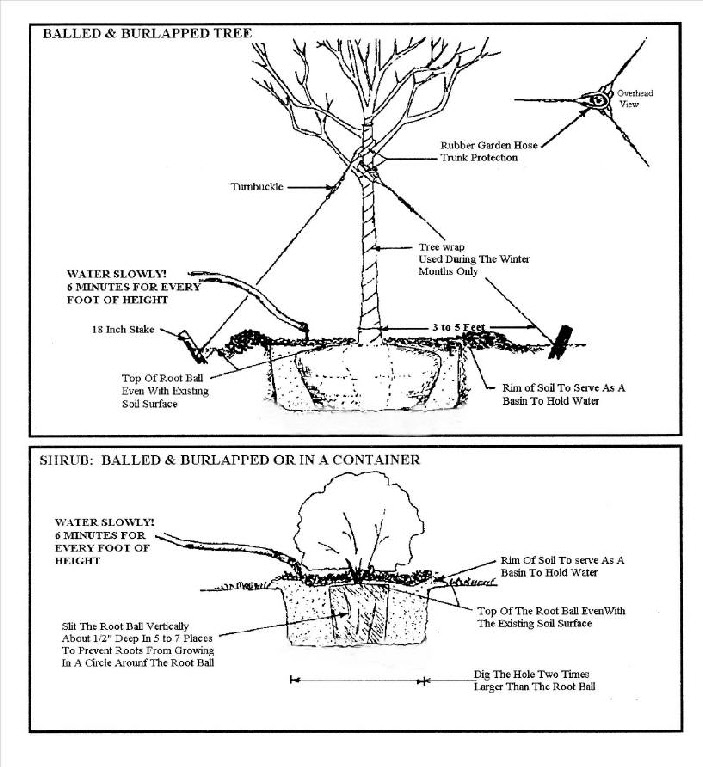PLANTSCAPE'S PLANTING PROCEDURES

|
*Before purchasing the plant, consider the site where you intend to plant. Is the area usually dry, or does it seem to be a low area staying wet most of the time? Will the plant be exposed to full sun or partial shade? For example, roses prefer 6 hours of sunlight per day, whereas azaleas prefer a partially shady exposure, such as a north or east side of the house. Is the soil heavy clay, or loose and easily worked? How will the plant be used, as a foundation plant, or for a screen etc.? Don't forget about the mature height and width of the plant! Ask one of our horticulturalist if you have any questions.
*Plant as soon as possible, preferably the same day as the purchase. If this can't be done, protect the root ball from sun and drying winds. Keep the root ball moist by watering daily until planting.
PLANTING PROCEDURES 1. Dig the hole 1½-
2. Add 1/3 sphagnum peat moss, compost or well rotted manure to the soil that was removed from the hole. Add bone meal to promote better root development. Mix the soil, peat moss and bone meal together thoroughly.
BALLED and BURLAPED PLANTS Set the plant in the hole. Natural burlap decomposes, therefore it can be left around the root ball. Cut any twine that is wrapped around the trunk of the plant. This can girdle and eventually kill the plant
PLANTS IN PLASTIC CONTAINERS Slide the plant out of the container. Using a knife, make 5-
BARE ROOT PLANTS Soak the roots in water several hours before planting. Remove any broken roots. Place soil in the bottom of the hole forming a cone shaped mound. Spread the root out over the mound of soil. Fill the hole with the prepared soil to cover the roots.
3. Place the plant in the hole so the top of the ball is level with the existing soil surface. Never plant deep; it is better to set the plant a bit too high, for planting too deep can smother the plant's roots.
4. using the prepared soil fill in around the root ball. After every 6 inches of soil, firm the soil, but do not pack it. When the hole is half way filled up add root stimulator and water. After fill to hole form a water basin at the edge of the hole.
5. Water, slowly and thoroughly! (Rule of Thumb: allow water to run slowly on root ball for 6 minutes for every foot of plant height. For example a 3 foot tall plant should be watered for 18 minutes.) Continue to water once a week for the next two months. Reduce waterings to every 10 to 14 day for the remainder of the growing season. If it should rain, continue to watering unless the rain gauge measures one full inch or more.
PLEASE NOTE: Watering rate and frequency varies an soil, plant type, exposure and rainfall.
6. Use 'Fertilome" root stimulator every-
7. Prune off any damaged branches at this time.
8. Stake all tree that have a trunk diameter of 1½ inches or more. Trees planted September through February should be wrapped up to the first set of branches. Tree wrap reduces the chance of the sun scalding tender bark. Remove tree wrap in late March. Leave guy wires in place for one full year.
|

Herrin, Illinois
618-